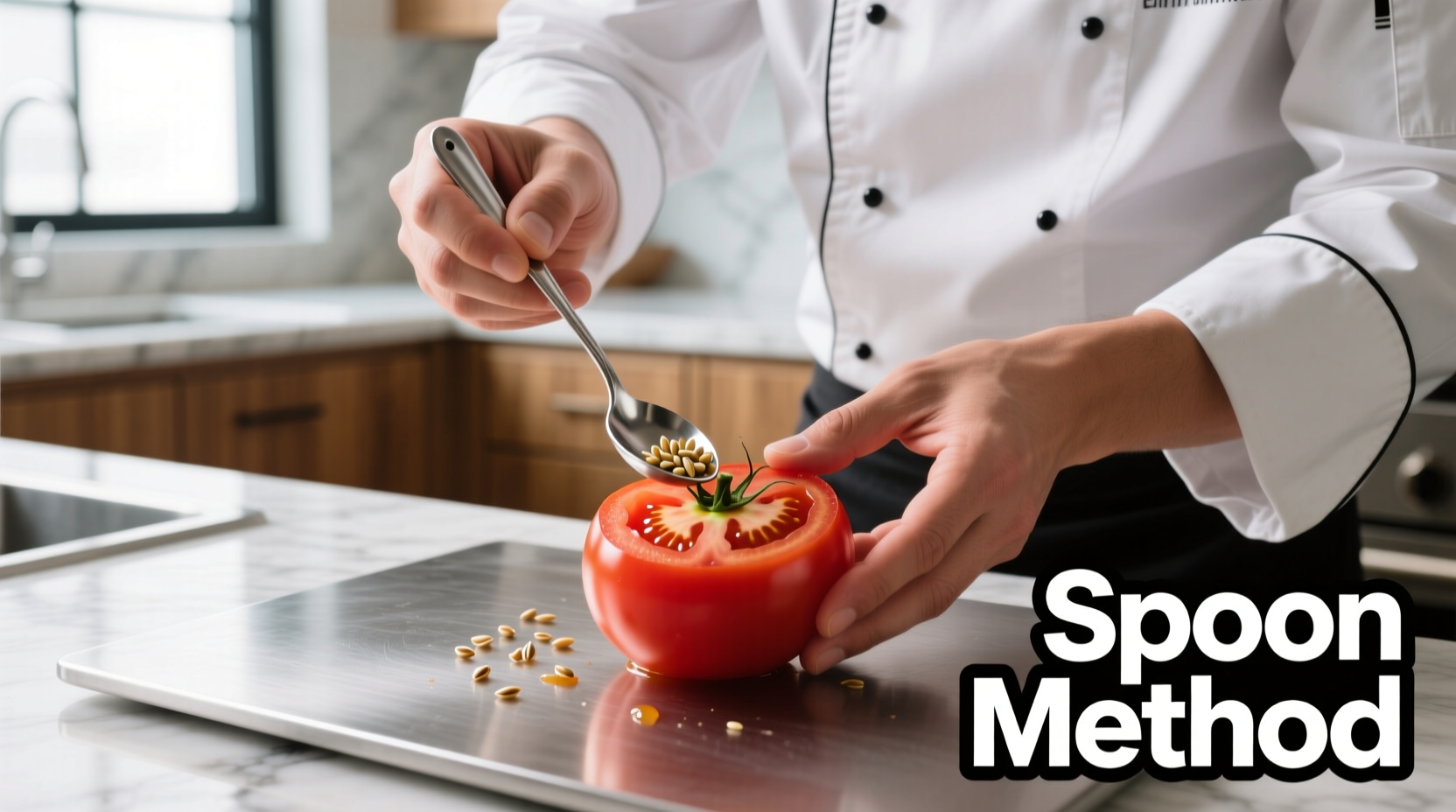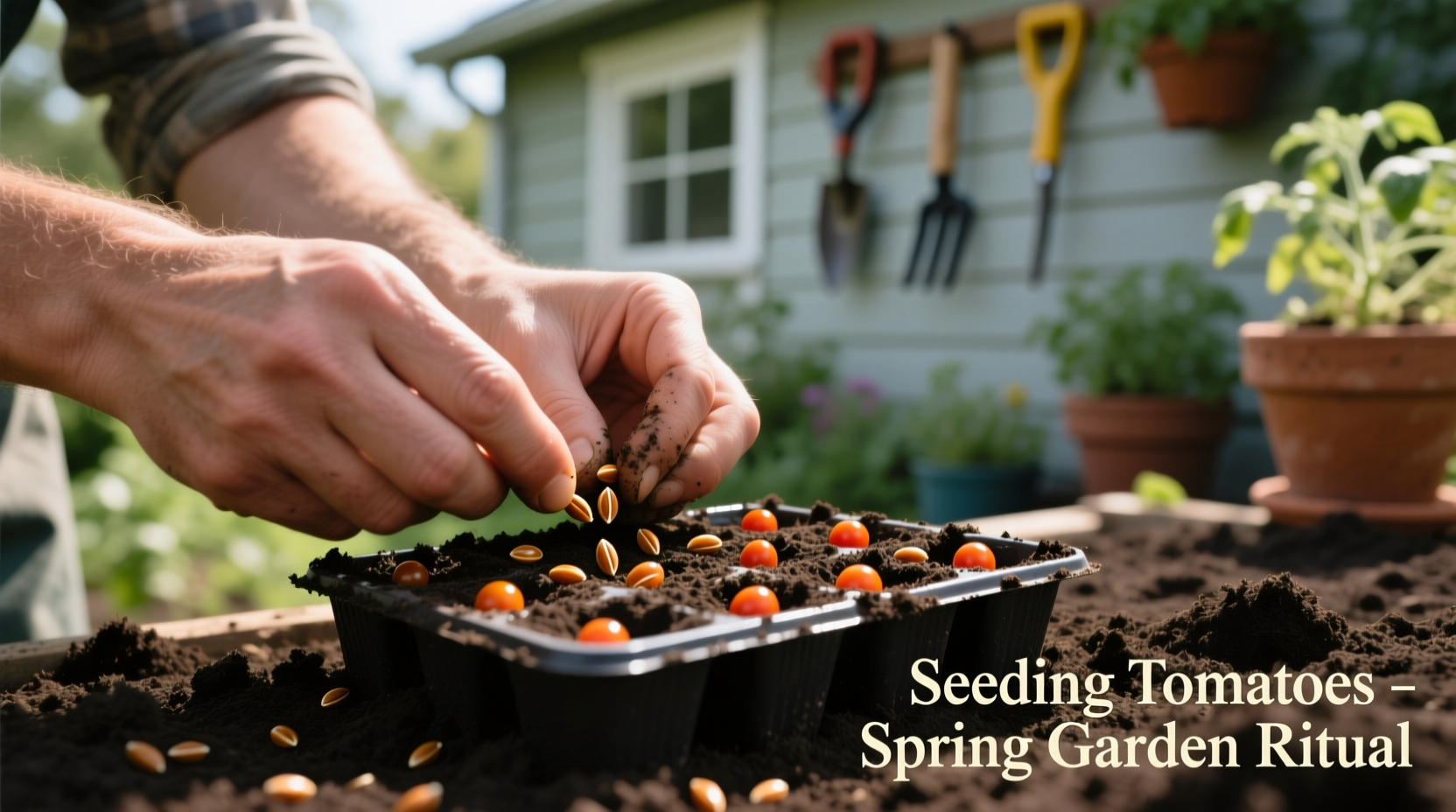Seeding a tomato removes excess moisture and gel surrounding the seeds, improving texture in sauces, salads, and stuffed dishes while concentrating flavor. Professional chefs use three primary methods: spoon extraction for large tomatoes, knife scoring for precision work, and strainer techniques for批量 processing.
Why Proper Tomato Seeding Matters for Culinary Success
When preparing dishes like tomato sauce, bruschetta, or stuffed tomatoes, excess moisture becomes your biggest enemy. Unseeded tomatoes contain up to 94% water, with the highest concentration in the gel surrounding seeds. This excess liquid dilutes flavors and creates texture issues in finished dishes. According to USDA food composition data, removing seeds and gel reduces moisture content by approximately 15-20%, significantly improving sauce consistency and salad presentation.
| Tomato Component | Moisture Content | Flavor Impact |
|---|---|---|
| Flesh (outer meat) | 92-93% | Rich, balanced tomato flavor |
| Gel surrounding seeds | 96-97% | Mild, slightly bitter notes |
| Seeds | 90-91% | Negligible flavor contribution |
When Seeding Becomes Essential (And When It's Optional)
Not every tomato recipe requires seeding. Understanding context boundaries prevents unnecessary kitchen work while ensuring optimal results:
- Mandatory seeding: Tomato sauces, stuffed tomatoes, tomato tart fillings, and any dish where excess liquid would compromise texture
- Recommended seeding: Caprese salad variations, tomato-based salsas, and dishes requiring concentrated tomato flavor
- Optional seeding: Roasted tomatoes, tomato soups (where liquid is part of the recipe), and fresh tomato sandwiches
- Never seed: Cherry tomatoes for salads and dishes specifically highlighting tomato seeds' textural element
Three Professional Seeding Methods Compared
Professional kitchens use different techniques based on tomato variety and recipe requirements. Each method preserves maximum usable flesh while removing problematic moisture.
The Spoon Method (Best for Large Tomatoes)
- Cut tomato horizontally through the equator
- Gently squeeze each half over a bowl to release excess juice
- Insert a teaspoon between the flesh and seed cavity
- Rotate spoon while applying light pressure to separate seeds
- Scrape remaining gel with spoon edge for complete removal
The Knife Method (Precision Work for Medium Tomatoes)
- Cut tomato into quarters lengthwise
- Hold each quarter over bowl and gently squeeze to release seeds
- Use paring knife tip to scrape remaining gel from flesh
- Rotate tomato quarter to access all angles
- Trim any remaining gel pockets with precision cuts
The Strainer Method (Efficient for Multiple Tomatoes)
- Score an "X" on tomato bottom with paring knife
- Blanch in boiling water for 15 seconds, then ice bath
- Peel skin starting from scored area
- Chop tomatoes roughly and place in fine-mesh strainer
- Press gently with back of spoon to separate seeds from flesh

Professional Tips You Won't Find in Basic Guides
Seasoned chefs know that proper tomato seeding involves more than just removing seeds. These evidence-based techniques preserve maximum flavor while eliminating moisture problems:
- Preserve the flavor gel: Contrary to popular belief, the gel surrounding seeds contains valuable glutamates that enhance umami. Chefs often reserve this gel for stocks rather than discarding it completely.
- Temperature matters: Room temperature tomatoes seed more cleanly than cold ones. Refrigerated tomatoes have constricted cells that release moisture unevenly.
- Timing is critical: Seed tomatoes immediately before use. Pre-seeded tomatoes lose structural integrity within 30 minutes at room temperature.
- Tool selection: A grapefruit spoon works better than regular teaspoons for larger varieties like beefsteak tomatoes.
Avoid These Common Seeding Mistakes
Even experienced home cooks make these critical errors that compromise dish quality:
- Over-squeezing: Excessive pressure forces flavorful flesh through your fingers. Gentle pressure releases seeds without wasting edible portions.
- Ignoring tomato variety: Roma tomatoes require different handling than heirloom varieties due to seed cavity structure differences.
- Discarding all gel: The gel contains valuable flavor compounds. Reserve it for stocks or sauces where texture isn't critical.
- Using dull knives: Sharp paring knives create clean cuts that minimize cell damage and juice loss.
Historical Evolution of Tomato Seeding Techniques
Tomato seeding methods have evolved significantly since tomatoes entered European cuisine:
- 16th-18th century: Early European cooks avoided seeding, considering tomatoes poisonous and using them only as ornamental plants
- 19th century: Italian chefs developed initial seeding techniques for pasta sauces as tomatoes became culinary staples
- Early 20th century: French culinary schools standardized spoon method for consommés and refined sauces
- Mid-20th century: American food scientists documented moisture content issues, leading to widespread adoption in professional kitchens
- Modern era: Molecular gastronomy has revived interest in preserving tomato gel for flavor enhancement
Practical Applications Across Culinary Traditions
Different cuisines approach tomato seeding based on traditional requirements:
- Italian cuisine: Essential for perfect marinara sauce consistency; chefs seed Roma tomatoes but often leave seeds in Caprese salad
- Mexican cuisine: Salsa roja typically uses seeded tomatoes while pico de gallo keeps seeds for texture
- Middle Eastern cuisine: Stuffed tomato dishes (like mahshi) require complete seeding to prevent filling from becoming soggy
- French cuisine: Tomato tartes and consommés demand meticulous seeding for refined texture
Maximizing Your Tomato's Potential
Proper seeding transforms ordinary tomato dishes into extraordinary culinary creations. By understanding when and how to remove seeds while preserving maximum flavor, you'll achieve restaurant-quality results at home. Remember that the goal isn't complete seed removal but strategic moisture management that enhances your specific dish. Whether you're making a delicate tomato coulis or hearty stuffed peppers, these professional techniques ensure optimal texture and concentrated flavor in every bite.











 浙公网安备
33010002000092号
浙公网安备
33010002000092号 浙B2-20120091-4
浙B2-20120091-4